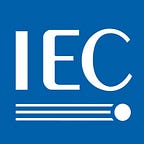The digitalization of information is transforming the way we live and work as information is gathered, processed and applied to improve our experiences. At home, for example, the data collected and analyzed ensures that the preferred room temperature is calibrated depending on the occupancy and time of day. Farm animals are monitored from afar to provide the correct quantities of food and water for consumption and guard against illnesses. Manufacturers rely on digital twins to enhance their production capabilities and predict glitches before they occur.
This utilization of data is driving such trends as smart cities, smart buildings and smart manufacturing. It relies on new technologies such as the Internet of Things (IoT) to gather the data, cloud computing to store the data and machine learning to analyze it. But these new technologies, and their successful implementation, are only possible if they can provide high levels of performance and reliability, interoperability and flexibility for future applications.
Data networking is the one common thread throughout these digital trends. Regardless of whether the network is cabled or wireless, collected data needs to be carried through networks to be analyzed and dispatched. The work to standardize the interfaces and generic cabling necessary for data networking is undertaken by a joint IEC and ISO technical committee focusing on the interconnections of IT equipment.
According to Rainer Schmidt, who is leading the international standardization efforts, “People are looking for standards to connect the world. When we speak about IoT, much has to do with bringing information, such as temperature or pressure levels, into a given database or network. To do this and make IoT a reality, you need a clear structure to send to other networks”.
Connecting systems
In homes or offices, systems are increasingly being adopted that connect electrical and electronic equipment. Devices can exchange data and respond accordingly to allow for automatic decision-making. Remote access and user interfaces help manage systems from afar. Protocols are necessary to permit the seamless delivery of services that link homes, businesses and public networks.
International standards provide the architecture for the home electronic system. It includes standards for the data link layers, protocols for intelligent grouping and resource sharing as well as remote access system architecture.
However, updates are necessary to ensure that systems accommodate future applications. Schmidt noted that “we are very much interested in IoT. Everyone is speaking about sensors and so we need to introduce sensor upgrades. We also need to address certain aspects of cyber security through robust infrastructure to protect home networks, attached devices and users”.
Cables are often used to connect data networking systems. Generic cabling system standards are suitable for a wide range of applications and are designed to support different hardware, including those expected to be adopted in the future. Updating them is a priority for Schmidt: “This standard is very important because it is the only one defining transmission channels and the limit values on these channels. The defined limit values are used to test or qualify cabling networks and are referenced by many groups such as IEEE.”
Standardizing single pair cabling is a key objective over the next two years. As Schmidt noted, “to develop standards for single pair cabling and make it fit will help to further develop IoT. This is a major aspect of our work”.
The development of standards to connect computer systems and their peripheral devices is another important aspect for data networking since these interfaces ensure interoperability as well as network performance. It includes updates to the standards for small computer system interfaces (SCSI) and the fibre channel protocol.
Saving energy
The multiplication of electronic devices connected to data networks consumes energy. And, as businesses and homes seek to become more energy efficient and reduce costs, it is necessary to find ways to better manage energy usage.
A key standard specifies a module to allow the transfer of energy management data between a device and a smart grid using a data network. This allows grid operators to better understand energy demands and improve efficiency. It is a first step towards an interactive system between the smart grid and networked devices.
According to Schmidt, “the environment is an important area where we can contribute. Currently, we are developing a standard for a system of interacting energy management agents for demand-response energy management. This will allow an efficient information exchange from homes to energy service provider that will drive smart home development”.
Single pair Ethernet (SPE) with remote powering (i.e. PoDL, power over data line) is another example of how energy costs can be reduced in a data network. By transmitting data and voltage simultaneously, energy costs can be reduced and make batteries in sensors obsolete. Schmidt noted that this is what makes SPE cabling smart.
Next steps
As Schmidt noted, “We develop data networking standards and make them fit for the future. We make sure that they are ready for IoT and industry needs. They are not entirely new work items, but rather developed step-by-step to make them fit for the applications we expect will arise in the next few years”. All of the big trends affecting homes and industry, from IoT and Big Data to smart manufacturing and smart buildings, have one common driver — data networking.
According to Schmidt, “We are close to the main trends like big data, like integrated industry or industry 4.0 and IoT which are major topics for us. In the next five years, we expect that single-pair cabling, higher bandwidth and technical data security (technical aspects, screening) for data networking will become focus areas for standardization.”
